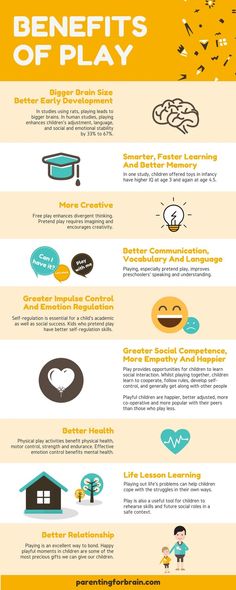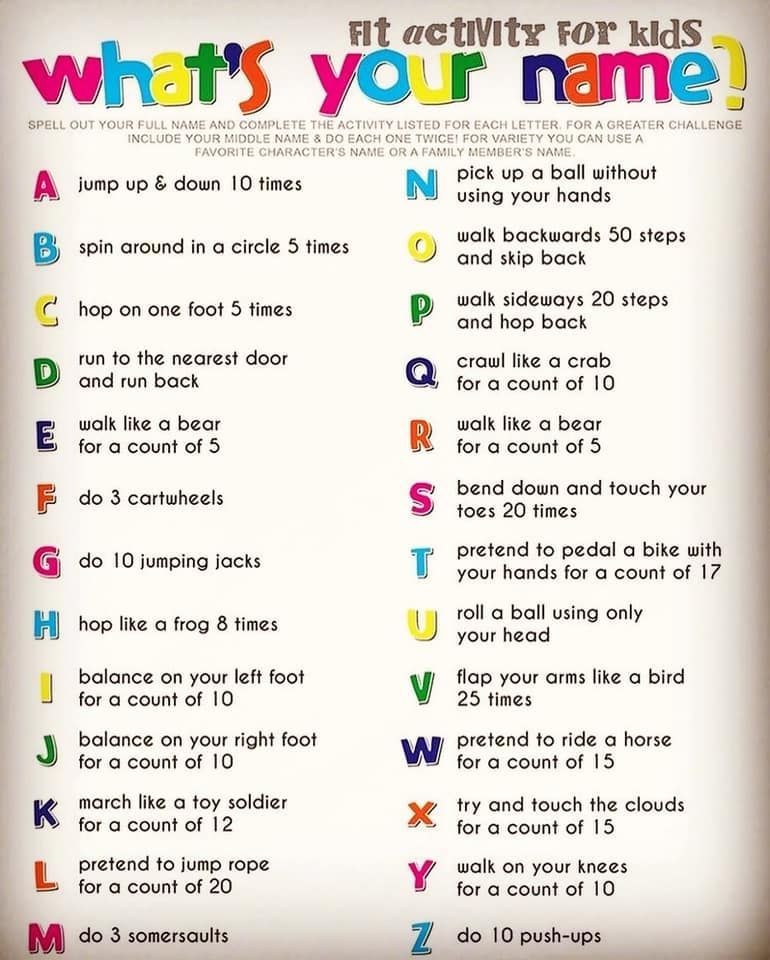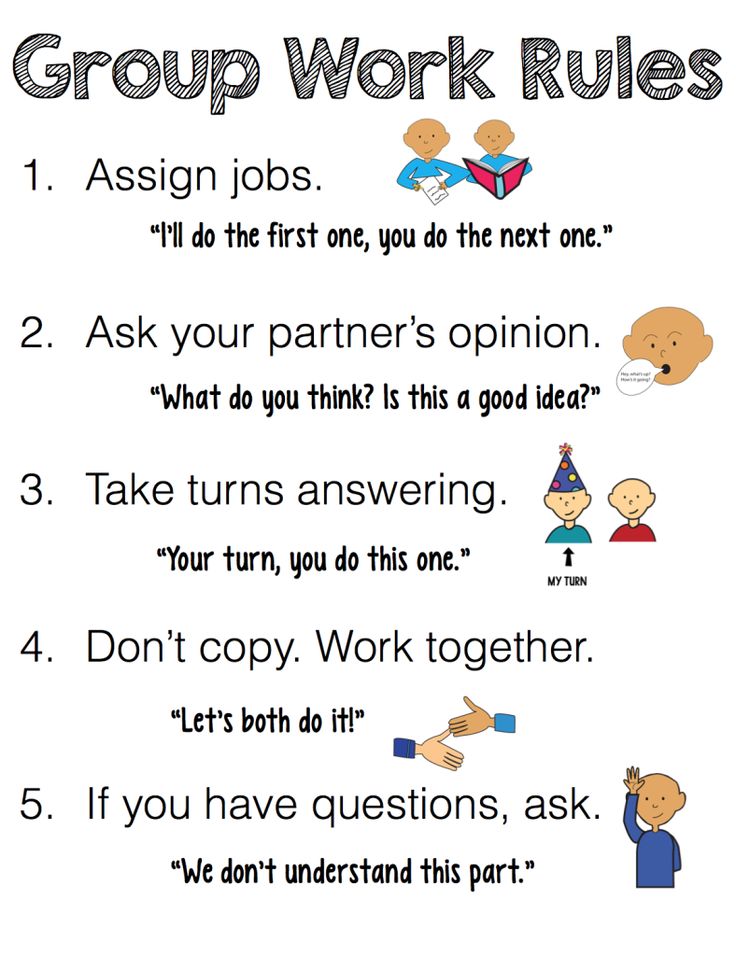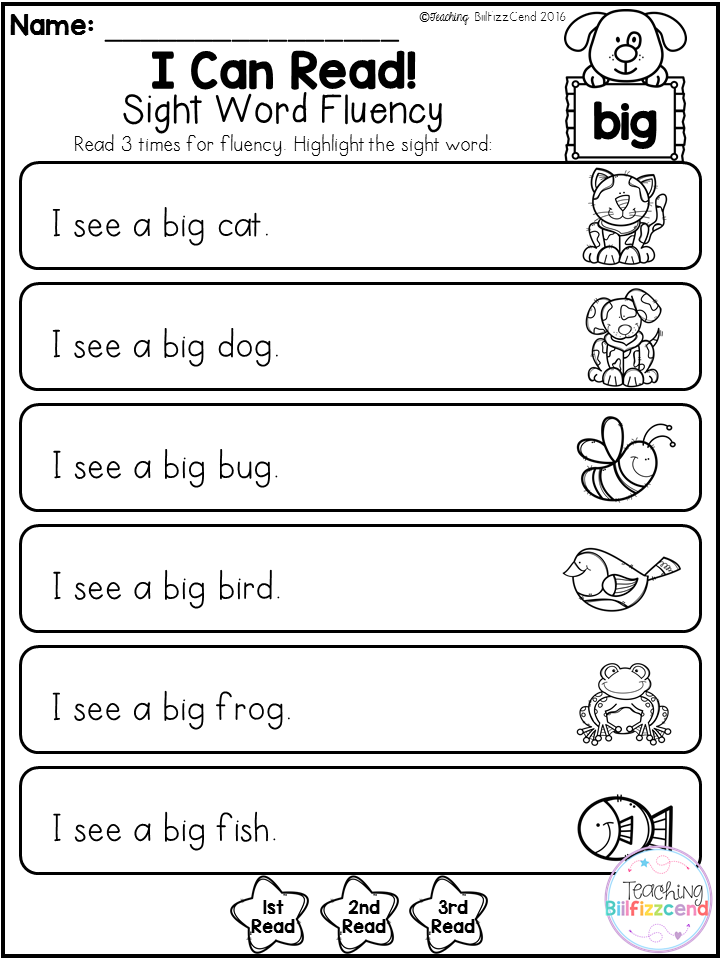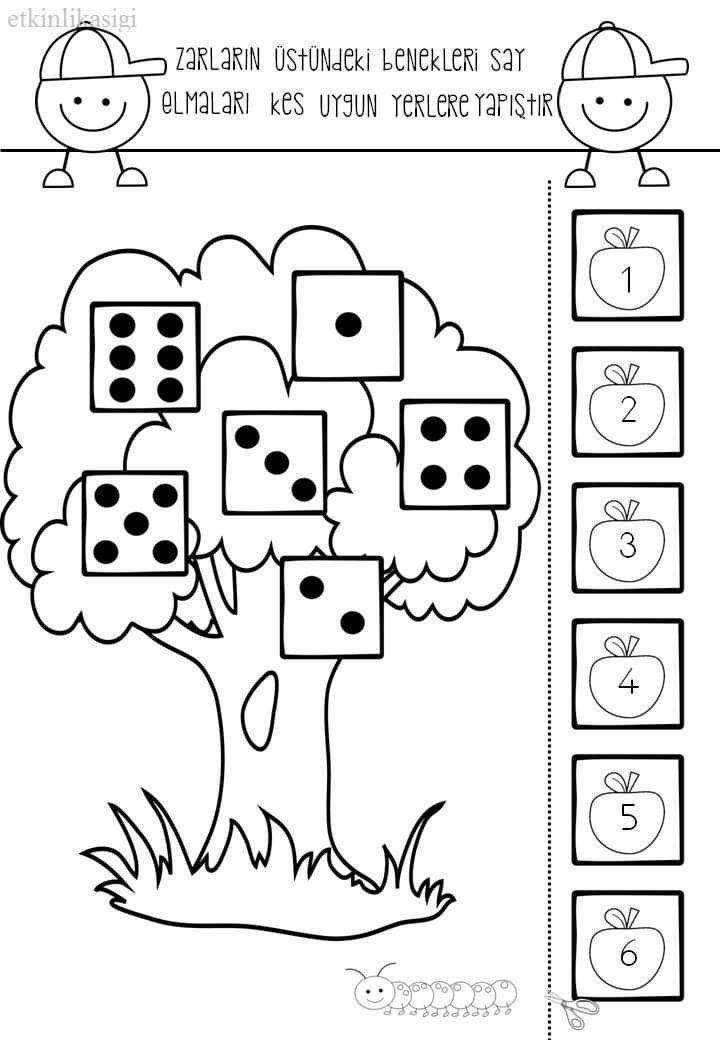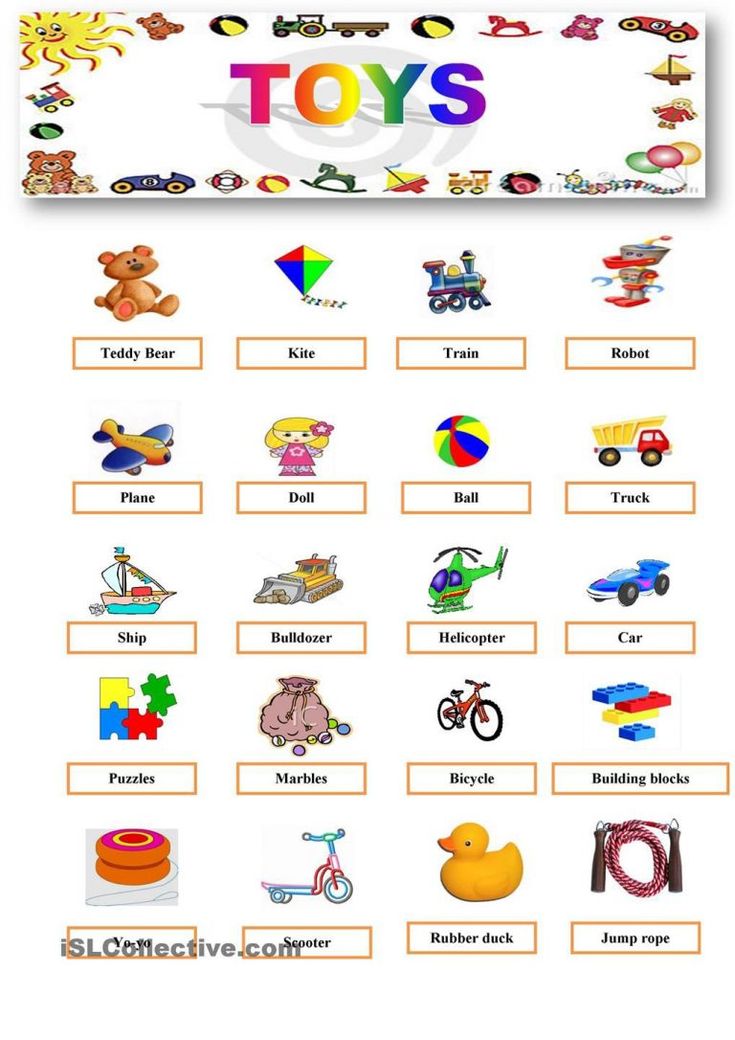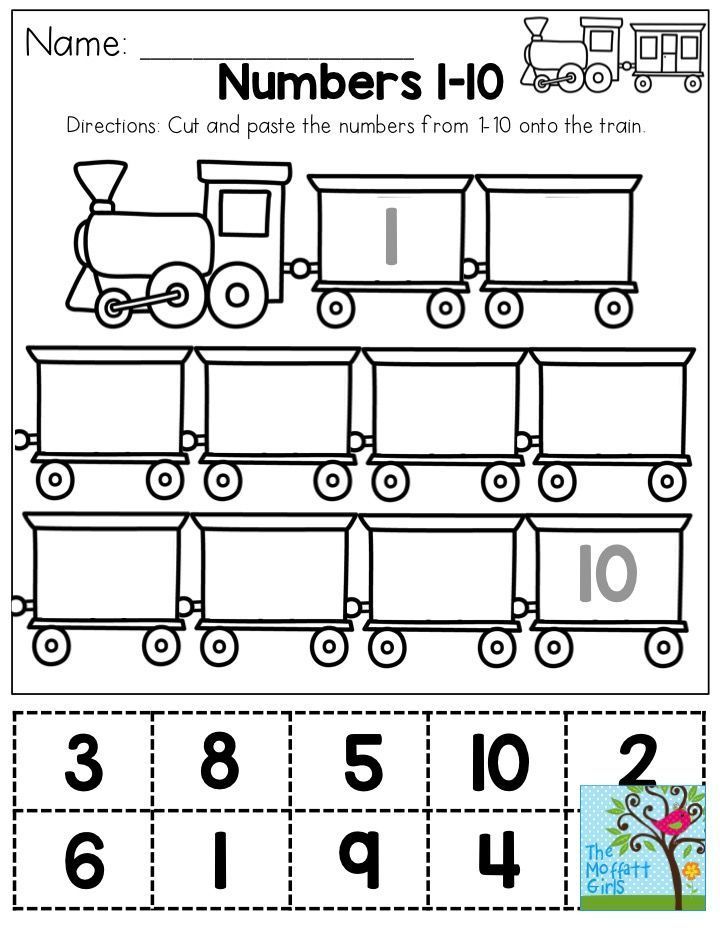How to encourage pretend play
The Land of Make Believe
By Lauren Lowry
Hanen Certified SLP and Clinical Staff Writer
The word "imagination" conjures up images of children pretending with dolls, pushing dump trucks, or dressing up as princesses or pirates. While young children do spend much of their time in the land of make believe, the imagination is not just reserved for children's play. It is because of the development of the imagination during childhood that adults are able to do many of the tasks that daily life demands. Adults constantly use their imagination to help them invent new things, visualize, solve problems, enjoy a book or movie, understand others' perspectives, make plans, come up with ideas, and think creatively. No wonder Albert Einstein felt that "imagination is more important than knowledge"!
Therefore, using one's imagination is a critical cognitive skill that is used throughout life, and it is important to encourage the imagination in childhood. But what is the connection between pretend play and language?
The Connection Between Pretend Play and Language
Pretend play and language both involve the same underlying ability to represent things symbolically.
Pretend play is also known as "symbolic play" because it involves the use of symbols. When we use symbols, we use something to stand for something else. In the case of pretend play, children may use one object to stand for another, such as pretending a spoon is a hairbrush, or a tablecloth is a cape. This type of symbolic thought is also needed for language, as our words are symbols. Our words stand for our thoughts and ideas. Therefore, pretend play and language both involve the same underlying ability to represent things symbolically (Weitzman and Greenberg, 2002). It's no wonder children start to engage in pretend play around the same time their first words emerge (between 12 to 18 months). Furthermore, children who have language difficulties sometimes also struggle with pretend play.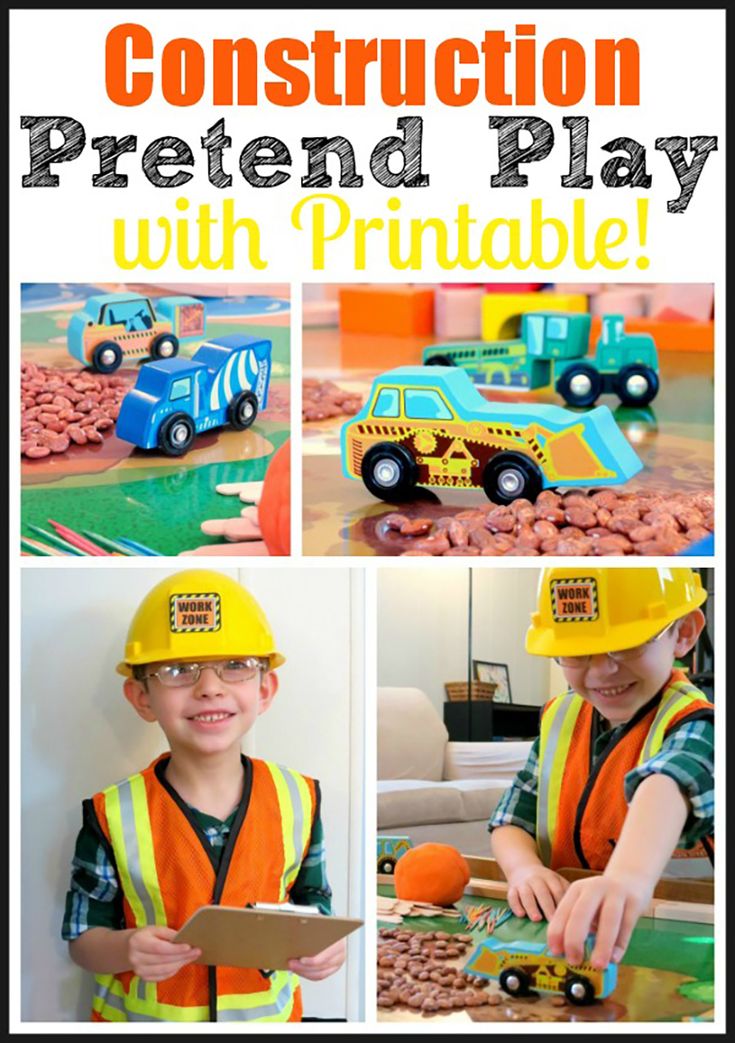
Why Encourage Pretend Play?
There are many reasons why parents and caregivers should consider encouraging their child's pretend play skills:
- Your child will gain practice with using symbols. This strengthens the foundation for your child's pretend skills and language skills.
- Pretend play is an excellent way to expose your child to new vocabulary that he may not be exposed to in everyday life, such as "pirate", "sword", "rescue", "castle", or "fairy".
- When you pretend with your child, you will help him learn to play with others. Eventually, your child will start to pretend with other children, where he will learn to take turns and collaborate.
- When children take on a pretend role, they imagine what it is like to be another person. This helps develop their ability to take others' perspectives and develop empathy.
- Pretend play is fun! When you play like a child and let your imagination lead, you and your child will never run out of things to play with or talk about!
How Pretend Play Develops
(adapted from Learning Language and Loving It, Weitzman and Greenberg, 2002)
In typical development, pretend play progresses through predictable stages. Children with developmental delays may progress through these stages at a slower rate.
Children with developmental delays may progress through these stages at a slower rate.
| Self-pretend | (12-18 months) During this stage, children perform one pretend action at a time on themselves, such as pretending to eat, drink, or sleep. Children tend to use toys that look quite realistic (e.g. a plastic toy spoon) or real-life objects (e.g. a real spoon). |
| Simple pretend | (18-24 months) Children at this stage perform simple pretend actions on toys or people. Children continue to use realistic-looking toys at this stage. Examples of simple pretend play include feeding a doll with a toy fork or making a toy airplane "fly". Children also imitate familiar adult actions at this stage, such as pretending to talk on a toy telephone. |
| Series of familiar actions | (24-30 months) Just as children this age are learning to combine words together to make little sentences, they are also learning to combine pretend actions together.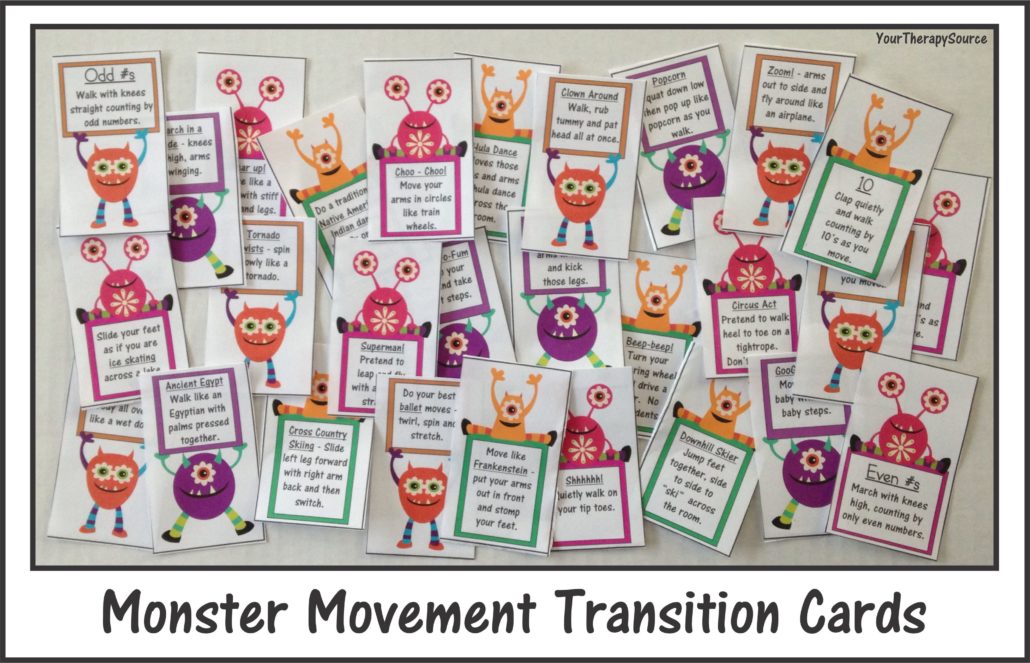 At this stage, children can act out a series of pretend actions related to a familiar routine, such as the steps involved in eating or going to bed. For example, the child may get out a toy bowl and spoon, pretend to pour cereal into the bowl, add some milk, and serve it to a doll. Children can use less realistic objects at this stage, as long as they are similar in shape to the real object. For example, a toy ball could be used as an apple to feed a doll. At this stage, children can act out a series of pretend actions related to a familiar routine, such as the steps involved in eating or going to bed. For example, the child may get out a toy bowl and spoon, pretend to pour cereal into the bowl, add some milk, and serve it to a doll. Children can use less realistic objects at this stage, as long as they are similar in shape to the real object. For example, a toy ball could be used as an apple to feed a doll. |
| Series of less familiar actions | (30-36 months) Less familiar themes enter children's play at this stage. They may pretend about going to the doctor or being a waiter at a restaurant. Children can pretend without an object (they can pretend their hand is a cup and drink out of it). Children can also substitute objects that do not resemble the "real thing". For example, a child can pretend a block is a garbage truck on its way to the dump. |
| Role play with other children | (3-5 years) Children pretend about imaginary themes now (things which do not really exist or that the child hasn't experienced yet in real life), such as pirates, castles, and superheroes.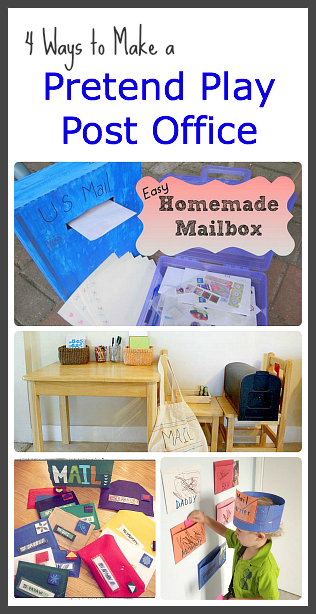 Children start to pretend with other children at this stage, each taking on different roles during the play. Realistic objects and toys are not needed as children can now pretend using gestures, mime, or unrealistic objects. Language often drives the play at this stage. Children explain their roles and use language to act out their role. For example, a child pretending to be a doctor might say to another child "I'm the doctor, you be the patient, ok? Where does it hurt?"
Children start to pretend with other children at this stage, each taking on different roles during the play. Realistic objects and toys are not needed as children can now pretend using gestures, mime, or unrealistic objects. Language often drives the play at this stage. Children explain their roles and use language to act out their role. For example, a child pretending to be a doctor might say to another child "I'm the doctor, you be the patient, ok? Where does it hurt?" |
Encourage Pretend Play – The "Hanen" Way!
Playing the "Hanen" way means getting down to your child's level and playing like a child yourself. By following the simple tips below, you will be stimulating your child's pretending skills and language, and the two of you are sure to have fun in the process!
- Be face-to-face (on the floor, across from each other at a table, etc). In this way, your child will feel connected to you, and he will be able to see your face, gestures, and pretend actions.

- Observe your child's interests. After you have put out a few pretend toys, watch and see what catches his interest. If he picks up a toy phone, play with it. If he starts to push a truck, play trucks. Your child will be motivated to play with you if you follow his lead.
- Don't put out too many toys at once. This can be overwhelming to some children. Select a few key toys that you think your child may like.
- If your child doesn't know how to pretend yet - you might need to start off the play. Pick up a toy your child likes and do one simple action yourself to give your child the idea. For example, you could demonstrate some self-pretend (see above) by picking up a toy cup and pretend to drink, saying "mmm…yummy juice". Then put the cup in front of your child and wait to see if he imitates you. If he doesn't, that toy may not interest your child.
 Try to observe your child's interests to determine if something else might be more interesting to him.
Try to observe your child's interests to determine if something else might be more interesting to him.
- Imitate your child's pretend actions. Observe what your child does with his toys, and then imitate his actions. This will likely motivate your child to do more pretend actions! Eventually, you can try introducing a new but related action to the play. For example, if your child has been pushing a dump truck, you can try adding some blocks to the back of the dump truck and dumping them out. Do this once, then wait to see what your child does next.
- Keep it simple. There's no need to introduce too many new pretend ideas at once. Children love repetition and learn from it, so they will likely enjoy practicing any new pretend actions over and over again.
- Don't just watch from the sidelines – get "into" the play! It is easy to become a "narrator" when playing with your child, and provide a play-by-play from the sidelines about what your child is doing.
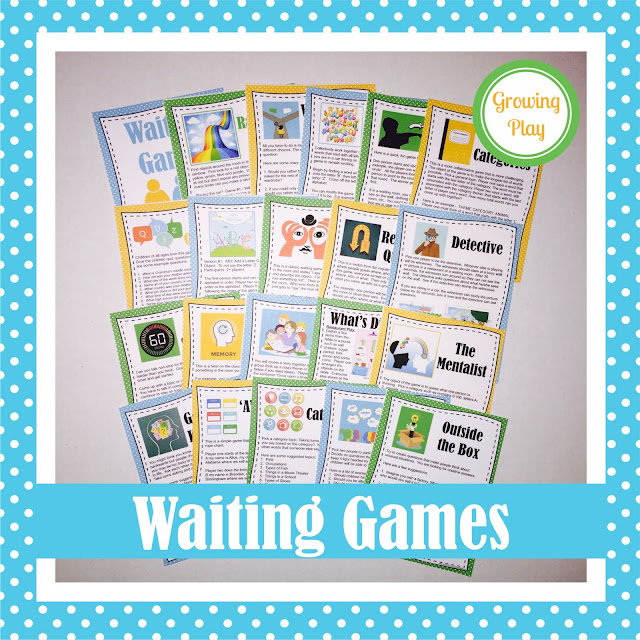 A narrator says things like "Oh, you are feeding the baby. You are taking such good care of your baby". If you have a toy in your hand and play yourself, it will ensure that you are "in" the play and playing with your child, not on the outside providing narration. Being ‘in' the play gives your child more chances to learn because it allows for more interaction and conversation.
A narrator says things like "Oh, you are feeding the baby. You are taking such good care of your baby". If you have a toy in your hand and play yourself, it will ensure that you are "in" the play and playing with your child, not on the outside providing narration. Being ‘in' the play gives your child more chances to learn because it allows for more interaction and conversation.
- Take turns. When children aren't pretending very much, it's easy to take over the play in an attempt to show your child what to do. After you have done something with your toy, be sure to pause and wait so that your child can have a turn to do something. In this way, your play together will be a back-and-forth "conversation", in which each of you has a chance to say or do something.
- Introduce new ideas. For children who can link some familiar pretend actions together, the goal is to encourage less familiar themes.
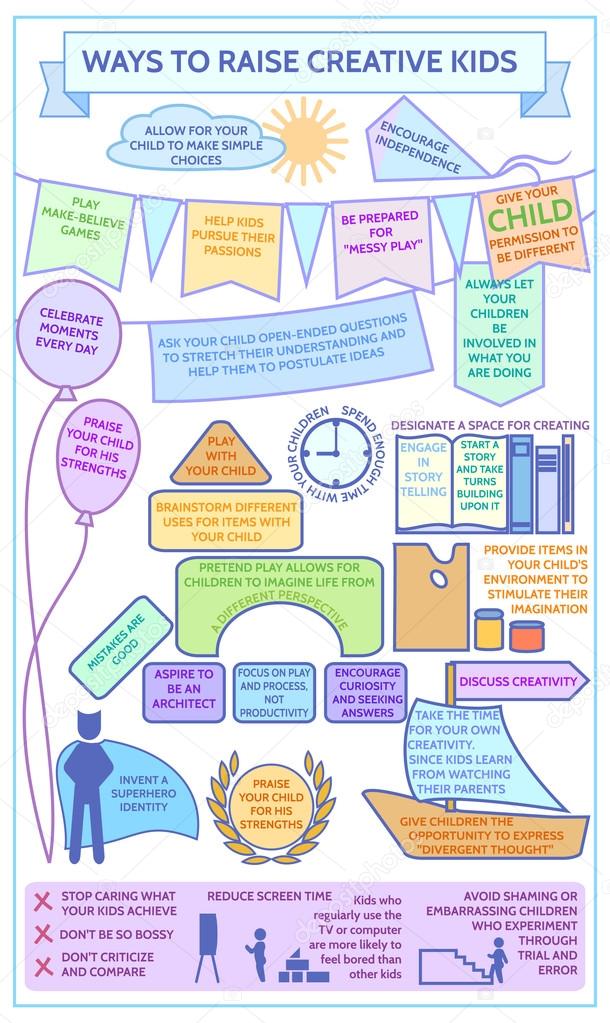 For example, if a child enjoys pretending with vehicles, you could introduce a less familiar theme by having the cars break down and taking them to the mechanic. Or perhaps superheroes could drive the cars as they save the day! Or if a child enjoys doll play, you could introduce the idea of a fairy coming to visit the doll, or maybe the doll could visit a castle to see the princess.
For example, if a child enjoys pretending with vehicles, you could introduce a less familiar theme by having the cars break down and taking them to the mechanic. Or perhaps superheroes could drive the cars as they save the day! Or if a child enjoys doll play, you could introduce the idea of a fairy coming to visit the doll, or maybe the doll could visit a castle to see the princess.
- Expose your child to new experiences. Every time you go somewhere new with your child, this becomes the raw material for pretend play. A trip to the zoo can spark a whole new play theme for your child. Books also allow you to introduce imaginary themes to your child which can be incorporated into pretend play.
- Choose the right toys. For ideas about selecting toys that encourage pretend play, read our article "Toys that kickstart the imagination ".
By getting in touch with your own "inner child" and using your imagination, you will discover a new way to connect with your child. When you follow your child's lead, you will learn more about your child and his play interests. Your child will be very motivated to play with you in this way and feel very connected to you. And while it may look to others like you two are just messing around with trucks on the floor, you are really helping your child think symbolically and develop critical thinking skills that he will use throughout his life.
When you follow your child's lead, you will learn more about your child and his play interests. Your child will be very motivated to play with you in this way and feel very connected to you. And while it may look to others like you two are just messing around with trucks on the floor, you are really helping your child think symbolically and develop critical thinking skills that he will use throughout his life.
References
Weitzman, E. Greenberg, J. 2002. Learning Language and Loving It: A guide to promoting children's social, language, and literacy development in early childhood settings. Toronto: The Hanen Centre.
The Hanen Centre is a Canadian not-for-profit charitable organization with a global reach. Its mission is to provide parents, caregivers, early childhood educators and speech-language pathologists with the knowledge and training they need to help young children develop the best possible language, social and literacy skills. This includes children who have or are at risk for language delays, those with developmental challenges such as autism, and those who are developing typically.
Click on the links below to learn more about how Hanen can help you help children communicate:
10 Ways to Encourage Pretend Play
How do you let kids be kids? Grab 10 Ways to Encourage Pretend Play, with lots of tips for parents. This post is sponsored by Disney Book Group. All imaginative play opinions are my own.
10 Ways to Encourage Pretend Play
May she never lose her love for play.
Childhood by very definition is all about playtime. And I have to admit, I really love this age for play. Wrapping up our kindergarten year, it’s been a whirlwind of growth for this little girl. From absorbing book after book to singing endless songs to exploring new adventures to playing all day every day – I absolutely LOVE this age. I wish I could freeze time, especially with the lazy days of summer ahead. But may our kids never lose their love for play, no matter what age they are. Today I’m slowing down time and encouraging all parents to find the time for playtime with our kids and 10 Ways to Encourage Pretend Play.
New
Harold & Hog Pretend For Real! from Mo WillemsBooks, aka a child’s window to imagination! I love how books can instantly transport my kids to a new world or play with a best friend. There’s something so comforting and yet exciting about digging into not just any book – but a good book. And with a 6-year old finishing up kindergarten, this girl is all about good books, especially ones from Mo Willems’ Elephant & Piggie Like Reading! series.
<
What happens when best friends Harold and Hog try to be like Elephant & Piggie? Can their friendship survive? The 6th book in the series from author Dan Santat, Harold & Hog Pretend for Real! encourages kids to be kids – and play pretend!
She has been constantly reading and laughing along with her friends Elephant & Piggie. And the newest release Harold & Hog Pretend for Real! (now in stores!) has this little girl giggling and playing along with this hilarious adventure.
10 Ways to Encourage Pretend Play
Don’t let the “summer slide!” Pump up the play time with these 10 ways to encourage pretend play for kids.
- Read books and tell stories – some of the best play ideas come from characters and places they already know. (Psst, the new Harold & Hog Pretend for Real! book from the Elephant & Piggie Like Reading! series is a good place to start.)
- Limit screen time – while technology is certainly enticing, it limits children’s ability to play outside of the box. Limit screens to maximize open play opportunities.
- Get outside – leave it to nature for a little inspiration! Encourage the outdoors for playtime.
- Play with them – sometimes Mom and Dad have to show them how it’s done. Like following directions or trying something new, some kids just need a little push from someone they know and trust.
- Stock up on art supplies – nothing says play like creativity! A little art can stir up some fun play time ideas.
 One of our favorite summer activities is playing with sidewalk chalk!
One of our favorite summer activities is playing with sidewalk chalk! - Allow for a little chaos – that means giving up a little parental control. Allow your kids for a little freedom outside of the safe parental borders and let them explore new possibilities.
- Schedule free play – not every moment needs to be structured. I find that my kids do better knowing that free play is on the horizon. They can anticipate and plan for fun activities!
- Consider props and simple toys – dress up/role play with a little help is a great way to encourage pretend play.
- Be silly with your kids – it’s about letting your kids know that it’s FUN and safe to play! Laugh, tell jokes, and just enjoy the moment!
- Let them be bored – remember when you were little? Boredom encourages new ways to play!
Join the Mo Willems Thank-o-rama Celebration!
Are your kids in love with Mo Willems’ books too? Then get in the fun this month for the annual Mo Willems Thank-o-rama celebration! Mo Willems’ annual ThankoRama is a month long celebration in May derived from the final book in the Elephant & Piggie series, The Thank You Book.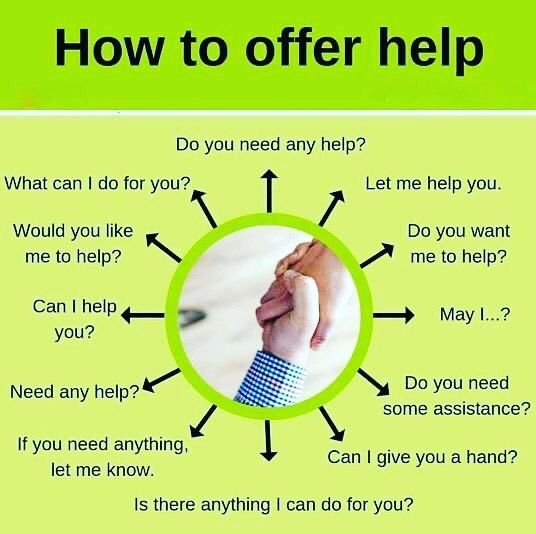 It’s a celebration of thanking all, especially children, for being readers. Visit ThankORama.com to find an event near you and grab FREE Mo Willems’ printables like coloring pages, kids activities and more. Perfect for summer and to encourage pretend play!
It’s a celebration of thanking all, especially children, for being readers. Visit ThankORama.com to find an event near you and grab FREE Mo Willems’ printables like coloring pages, kids activities and more. Perfect for summer and to encourage pretend play!
We are so thankful for Mo Willems and imaginative books like Harold & Hog Pretend for Real!. So no matter how your kids love to play, encourage pretend play this summer and all childhood long with these tips and the new book Harold & Hog Pretend for Real!, in stores now.
How do you encourage pretend play for kids?Be sure to follow Raising Whasians for parenting tips, kids crafts, family recipes, travel ideas and more.
Looking for more parenting tips? Check out these popular posts:
About Christie
I’m Christie, Korean mom to 2 biracial “whasians.” A Florida gal who loves crafts, travel & any excuse to eat! Read more. ..
..
🎖▷ Why you don't need to worry about weight gain with Lamictal
psychology
6,803 2 min read
If you're worried that taking Lamictal (lamotrigine) might cause weight gain, there's good news. It probably won't affect your weight much. If anything, you're more likely to lose weight due to Lamictal than gain weight, but either way, the changes are likely to be pretty small.
The effect of Lamictal on weight has been little studied and various clinical trials have found minimal effect. In fact, some researchers even considered the drug as a possible remedy for obesity and as a remedy for overeating. This information should be reassuring for people with bipolar disorder, as many of the medications used to treat this condition can cause weight gain. nine0003
Lamictal findings and weight gain or loss
Lamictal is an anticonvulsant that can be used to treat seizures such as epilepsy. It is also used as a mood stabilizer for bipolar disorder.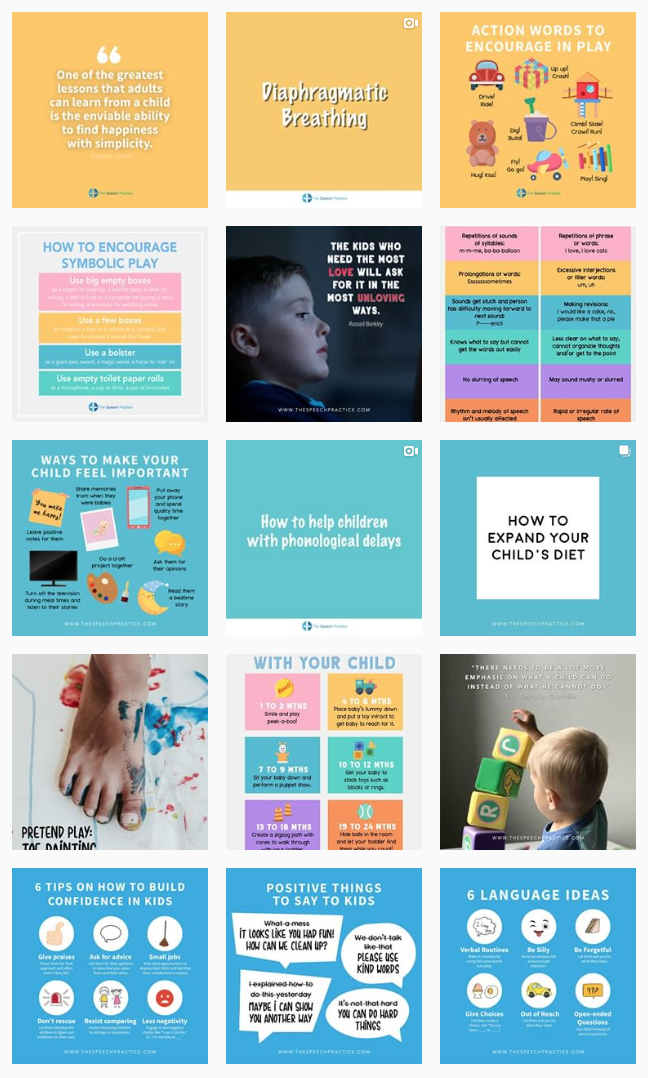
In the first clinical trials with the drug, 5 percent of adults with epilepsy lost weight while taking Lamictal, while 1 to 5 percent of patients with bipolar I disorder gained weight while taking the drug. The researchers do not disclose how much weight patients have gained or lost. nine0007 Meanwhile, a 2006 study comparing the effects on weight of Lamictal, lithium, and placebo found that some Lamictal-treated patients gained weight, some lost weight, and most remained about the same weight. Weight changes are usually not many pounds anyway. Obese patients taking Lamictal lost an average of four pounds, while the weight of non-obese patients remained virtually unchanged.
Relationship between weight gain and other bipolar drugs
Weight gain from medications used to treat bipolar disorder is unfortunately quite common. Some mood stabilizers commonly used for bipolar disorder, especially lithium and Depakote (valproate), carry a high risk of weight gain.
In addition, the atypical antipsychotics Clozaril (clozapine) and Zyprexa (olanzapine) tend to cause significant weight gain in people who take them. Finally, some antidepressants, notably Paxil (paroxetine) and Remeron (mirtazapine), have been associated with weight gain. nine0007 Therefore, if you are already overweight, you and your psychiatrist may want to consider additional weight gain when determining your bipolar medication regimen. Based on this, Lamictal may be a good choice.
Finally, some antidepressants, notably Paxil (paroxetine) and Remeron (mirtazapine), have been associated with weight gain. nine0007 Therefore, if you are already overweight, you and your psychiatrist may want to consider additional weight gain when determining your bipolar medication regimen. Based on this, Lamictal may be a good choice.
Lamictal as a possible treatment for obesity
Lamictal has also been studied as a possible treatment for obesity in people without epilepsy or bipolar disorder.
In a small clinical study of 40 people conducted in 2006, researchers randomly assigned participants to receive either lamiktal or placebo for up to 26 weeks. Each participant in the study had a body mass index (BMI) between 30 and 40, placing them in the obese group to the level of severe obesity. Those who took Lamictal lost an average of just over 10 pounds. Those who took the placebo lost about 7 pounds in the meantime, so while those who took Lamictal lost more weight, they didn't lose all that much more.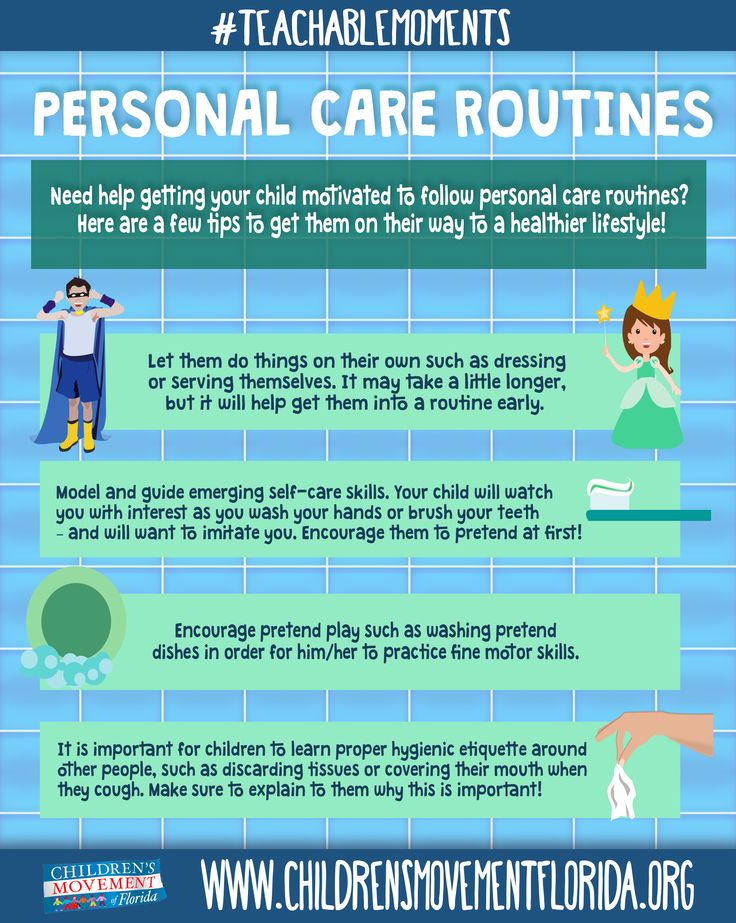 nine0007 Another study in 2009 looked at Lamictal as a remedy for overeating. This study involved 51 people with the condition that 26 of them received Lamictal, and 25 - placebo.
nine0007 Another study in 2009 looked at Lamictal as a remedy for overeating. This study involved 51 people with the condition that 26 of them received Lamictal, and 25 - placebo.
Those who took Lamictal lost more weight than those who took placebo (about 2.5 pounds vs. about one third of a pound) and did have significant improvements in blood sugar and cholesterol lab test results. However, Lamictal did not appear to affect other aspects of the eating disorder when compared to placebo. nine0003
Tags
Lamictal you don't need to worry about why increases
what to do when you don't feel like doing anything
motivation
1 3 minutes of reading
So it's morning and it's time to get out of bed. Children must go to school, and you and your spouse must be ready to go to work. But there's a problem, you don't want to get out of bed. Instead, you'd rather be in bed all day with warm blankets hidden from the world. nine0007 I've been here. I know what it's like to be afraid to hear the alarm go off in the morning, signaling that it's time to start the day. It's not a good feeling, especially when you know you have to get up. If you are a mom, you can agree that if you don't get up, the whole house is in danger.
Here are some tips and motivations to start your day:
Go to bed early
If you are a night owl, you can stay up late and even work better at night. But when you have kids, a job, a spouse you care about, you probably need some rest. It's tempting to go to bed after midnight to have some "quiet time," but perhaps you should put the kids to bed earlier so you can have that quiet time. It may take your body some time to adjust, but you will eventually get used to going to bed at normal hours. nine0007 Take a break
If it has been some time since you took a holiday or holiday, you may have a holiday. I know it can be difficult for you if you have to work to pay your bills. But at some point, if you are tired of the constant hustle and bustle of life, you should try to plan a little vacation. We all need a break sometimes, that's okay. Consider asking your boss about having a mental health day If you're married, talk to your spouse about traveling together or on your own. This might be the breath of fresh air you need. nine0007 Call grandparents
But at some point, if you are tired of the constant hustle and bustle of life, you should try to plan a little vacation. We all need a break sometimes, that's okay. Consider asking your boss about having a mental health day If you're married, talk to your spouse about traveling together or on your own. This might be the breath of fresh air you need. nine0007 Call grandparents
If your parents live nearby or can afford to visit you, invite them. Most parents would like to be able to visit and see their grandchildren if they could. Even if it's a short trip, they can give you the break you need. Having your parents as support for you and your family can take a huge burden off your shoulders. This can make you feel refreshed and regain focus and energy. nine0007 Check your diet
Our diet plays a big role in why we feel what we do. When we eat donut instead of mashed potatoes in the morning instead of breakfast, it will eventually catch up with us. Our body needs proper nutrients to give us the energy to get through our day.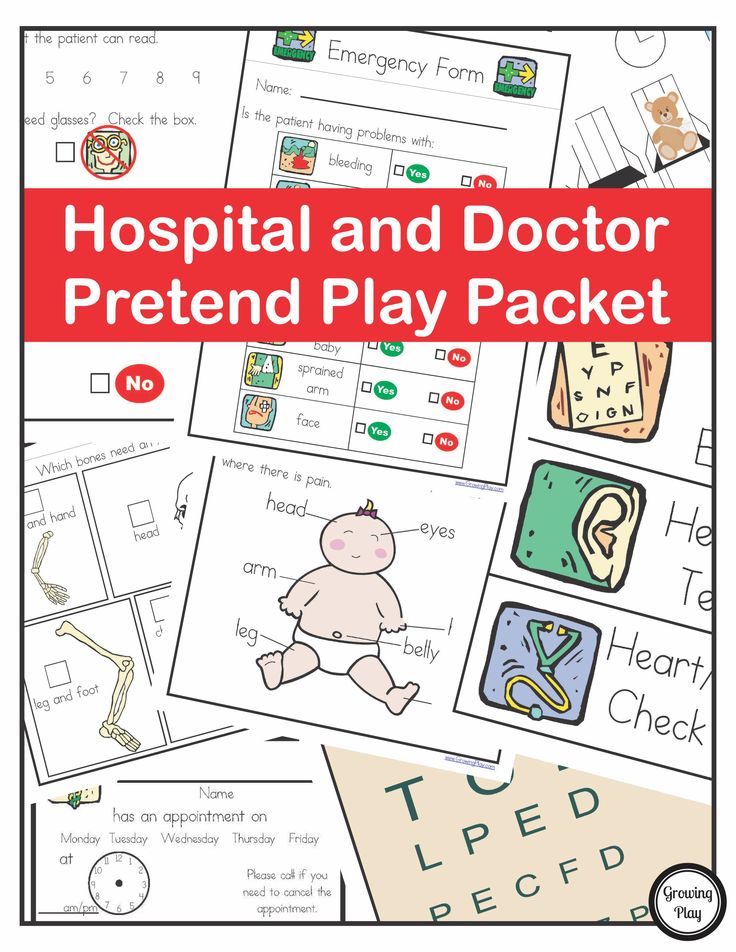 When we don't drink enough water, eat mostly fast food, sweets and starchy foods, then our body can start to feel a bit sluggish. Our bodies can be depleted faster than usual. nine0007 Take some time to think about what you have been eating for the past week or two. This may be the reason why you feel more tired than usual.
When we don't drink enough water, eat mostly fast food, sweets and starchy foods, then our body can start to feel a bit sluggish. Our bodies can be depleted faster than usual. nine0007 Take some time to think about what you have been eating for the past week or two. This may be the reason why you feel more tired than usual.
Incorporate fun things into your day
Without fun, our days can feel flat, leaving us with nothing to look forward to. Feel fair and worry a little about your day. If you like to read, take this novel. If you're more adventurous, take a short excursion after work on a Friday afternoon. Plan a mid-week movie night with family and popcorn. Whatever you do, make sure it's something you expect and enjoy. nine0007 Talk to a professional
If you've tried everything and nothing works, you may want to see a therapist. They are trained professionals and can help if you think you have a really serious problem. It's scary to talk to a complete stranger who says he can help you.